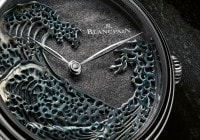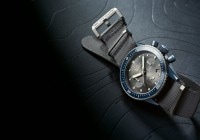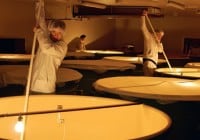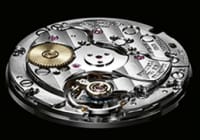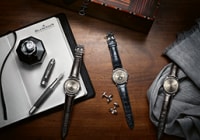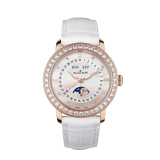
Search in Issues
Chapters
List of parts
Chapter 2
The LADYBIRD
From Villeret to Monroe.
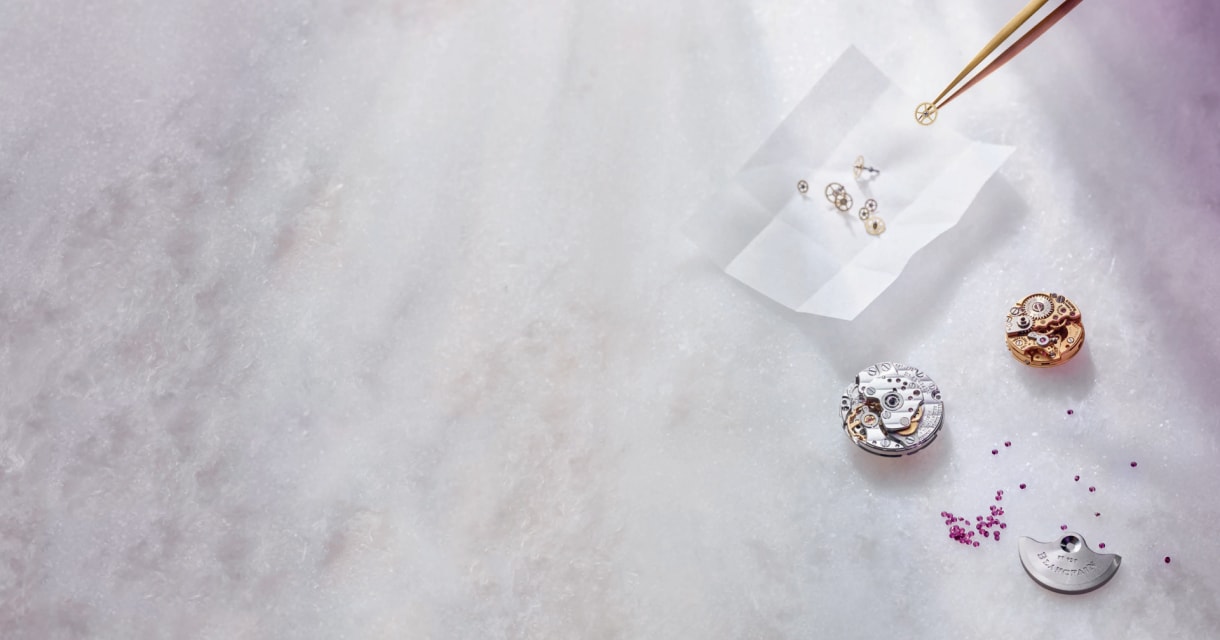
“If you want something said, ask a man; if you want something done, ask a woman.” Margaret Thatcher
Always good for a pithy turn of phrase, Margaret Thatcher got it half right when applied to Blancpain’s iconic women’s Ladybird, for it took the vision and talents of both a man and a woman, Jean-Jacques Fiechter and his aunt Betty Fiechter, to place Blancpain on the path to create it. The careers of the two Fiechters at Blancpain spanned sixty five years, which saw them singly, but for long periods together, leading Blancpain. It was during their reign that Blancpain’s specialty in creating women’s watches flourished, leading, in Blancpain’s historic Villeret workshops, to the conception of the celebrated Ladybird in 1956. These now iconic women’s timepieces soon achieved such fame and renown that a gorgeously diamond set platinum Blancpain watch (the headline lot in a Hollywood auction) became the choice of American actress Marilyn Monroe.
At but 16 years of age, Betty Fiechter joined Blancpain in 1915 as an apprentice. Although fresh from her studies, she could not have foretold where her engagement would lead. Betty was destined to stay at Blancpain working full time for another forty five years and as a trusted advisor for yet an additional ten years, a career of more than a full half century. When she joined, Blancpain was led by the seventh generation of the Blancpain family, Frédéric-Émile Blancpain who descended from the founder Jehan-Jacques Blancpain, who was recorded on the village rolls of Villeret as a watchmaker in 1735. Betty Fiechter’s responsibilities at Blancpain grew rapidly as she became head of manufacturing and technical and commercial development. Such was Frédéric-Émile Blancpain’s confidence in her that he moved his residence from the family home in Villeret to Lausanne. Revealing his embrace of technology and his progressive approach to management was his use of a then remarkable and groundbreaking invention, the Dictaphone. He was given to dictating his thoughts onto the wax rolls of the machine and depositing the rolls in the mail, trusting that his orders would be carried out by Betty.
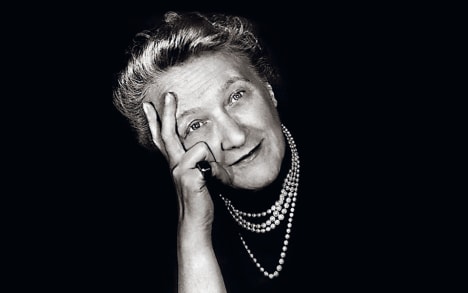
Betty Fiechter.
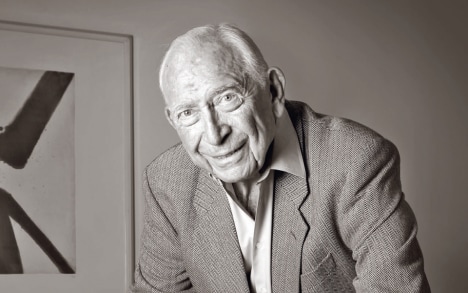
Jean-Jacques Fiechter.
For TWO CENTURIES there was family ownership of Blancpain.
Frédéric-Émile died suddenly in 1932. With his loss came the end of the family name Blancpain for the business, as he had no male heirs and his daughter did not wish to take up the enterprise. There were, however, capable hands eager to take over the Blancpain enterprise, those of Betty Fiechter who, together with the Blancpain sales director André Léal, pooled all their savings and purchased the company in 1933, renaming it Rayville-Blancpain, Rayville being a pho- netic anagram of Villeret. Owing to an oddity of Swiss law, this name change was not optional. With no member of the Blancpain family remaining associated with the business, the new owners were required to alter the official name. (The gymnastics provoked by this regulation have over time led to bizarre solutions with one famous Geneva watch company searching for and hiring a person “with the right last name” in order to continue their hyphenated name trademark.)
There is a touching letter marking the transfer of Blancpain after 200 years within the founding family to Betty Fiechter. Frédéric-Émile’s daughter, Nellie, wrote to Betty:
“My dear Betty:
You can imagine that it is not without a painful wrench- ing of my heart that I see the conclusion for me of the period that links me to all the memories of my childhood and youth. The end of Villeret for Papa brings real sadness, but I can assure you that the only solution which can truly ease my sadness is your taking over of the manufacture together with Mr. Léal. Thanks to this fortunate solution I can see that the traditions of our precious past will be followed and respected in every way.
You were for Papa a rare and dear collaborator. One more time let me thank you for your great and lasting tenderness which I embrace and carry with me in my heart.
Best to you, Nellie”
The early days were not easy for Betty Fiechter. The Great Depression walloped the entirety of the Swiss watch industry, causing widespread business failures and producing massive unemployment. Blancpain’s solution was to seek refuge in the American market, which, by the mid-30s, was in sounder condition than prevailed in Europe. The opening which Fiechter found was as a movement supplier. Over time, Blancpain became a principal supplier of Gruen, Elgin and Hamilton.
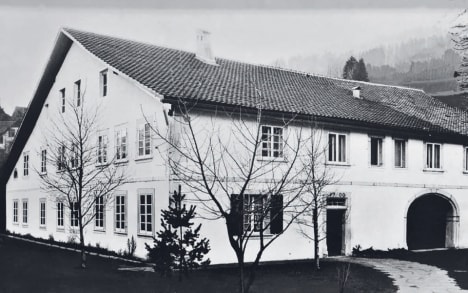
The original Blancpain Villeret farmhouse.

The village of Villeret, circa 1900.
A further blow to the enterprise came with the passing of Fiechter’s co-owner, André Léal, on the eve of World War II.
Betty Fiechter, thus, found herself in a unique, better said, pioneering, position in the watch industry. She became the world’s first woman patronne (president) and owner of a prestige watch business, one which then counted between 200 and 300 employees. Holding this position alone until 1950, her profile in the Swiss watch industry became legendary.
One of the specialties begun by Betty’s mentor, Frédéric-Émile, was the production of small movements destined for women’s watches. Starting just before World War I, Blancpain developed a small oval caliber and a baguette-shaped caliber, both of which proved to be extremely popular. Betty Fiechter expanded and made this specialty bloom. She seized upon a strategy of becoming a supplier of movements sold with a surrounding small inner case. This was done in response to punishing tariffs imposed upon fully completed cased watches. These inner-cased movements, called calottes, were shipped to markets around the world, with America being the most important, where they were inserted into precious metal cases and, in most instances, adorned with jewels.
Betty’s achievements in her leadership of Blancpain formed the platform for what was to come when she was joined by Jean-Jacques Fiechter, her nephew.
Jean-Jacques, with a degree in history and destined, in fact, to complete a doctorate, entered his aunt’s business with no background in watchmaking. Not that his family was distant from watchmaking; his grandfather was a watchmaker at Blancpain until 1939. The career development and training of her nephew was a priority for Betty and she organized a full year’s program to expose him to and train him in Blancpain’s finance, marketing and products. When this program was completed, Jean-Jacques was given charge of new product development and day-to-day operations at Blancpain.
Following the completion of his training year, Jean-Jacques joined Betty on the governing board of Blancpain, which then consisted of only the two of them. They jointly led Blancpain until 1960, when it merged into SSIH which included such famous Swiss names as Omega and Lemania. Throughout this time, they collaborated closely and often traveled as a team to meet with clients. Both Betty and Jean- Jacques served together on the larger SSIH board until 1970, when Betty fully retired.
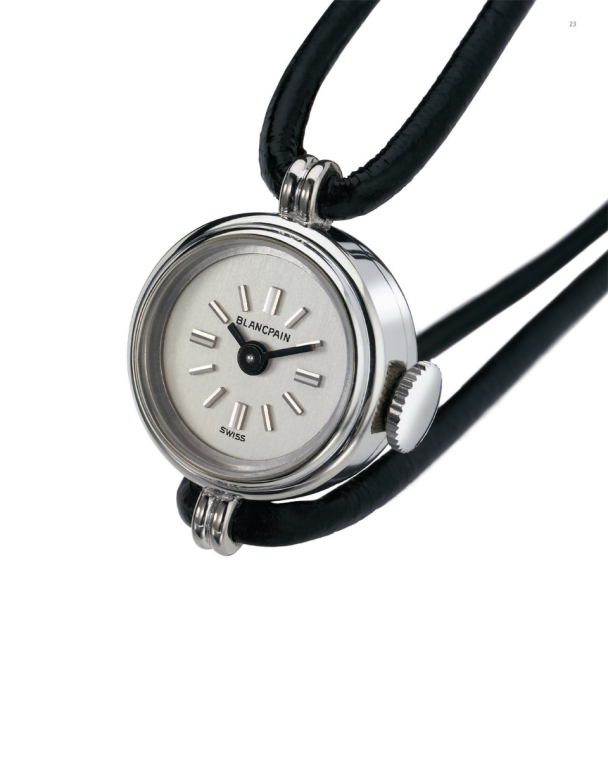
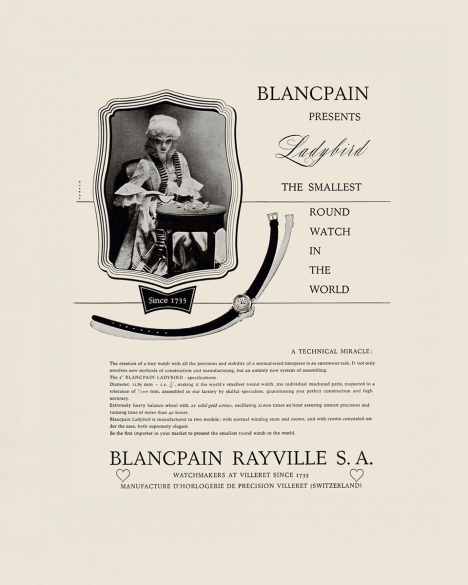

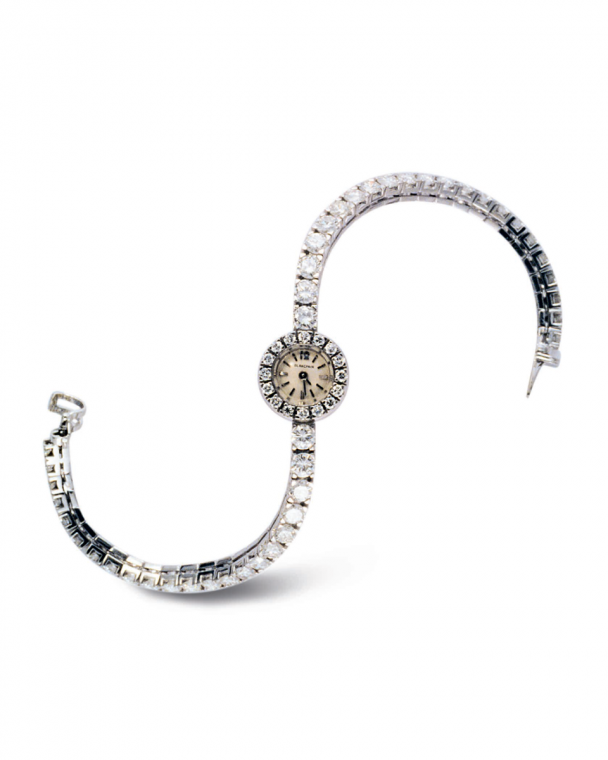
The Fiechter’s leadership of Blancpain witnessed THE CREATION OF TWO ICONS: the Ladybird and the Fifty Fathoms.
The early years of the joint Fiechter tenure in the management of Blancpain witnessed the creation of two watches which not only are iconic but endure today as pillars within the Blancpain collections: the Fifty Fathoms diving watch and, the subject of this essay, the Ladybird women’s timepiece. For the creation of the Ladybird, the Fiechters were able to draw upon what already was a well-established Blancpain specialty. The ambitions were soaring; from the very beginning of the project, they wanted to create a landmark record setting watch. Jean-Jacques was friendly and on exceedingly good terms with another watch house located in the Vallée de Joux that had debuted an extremely small baguette-shaped women’s watch. Fiechter’s goal was to surpass his friend’s work in two important respects: first, to be smaller and round in shape and, second, vitally, to be robust. The baguette watch from the Vallée de Joux was extremely fragile and, without being unduly harsh in criticism, prone to breakage from even as simple an act as turning the winding crown in the wrong direction.
The Fiechters succeeded brilliantly on both scores. The very definition of “hands on” for the development project, both Betty and Jean-Jacques lived in Villeret. Recall that this was the village in which Blancpain’s founder, Jehan-Jacques Blancpain, in 1735 had his workshop on the upper floor of his farmhouse dating back to 1636. By the early 1950s, Blancpain owned three separate buildings in Villeret: the original Jehan-Jacques farmhouse/workshop, another which was reconstructed in 1863 following a massive fire and named “La Maison”, and one other. La Maison was divided in two; Betty living in one half and Jean-Jacques in the other. Symbolically, La Maison linked many eras of Blancpain. It served as the residence of Jules-Émile Blancpain, the father of Frédéric-Émile, Frédéric-Émile himself, and finally the Fiechters. Later, in 1959, Jean-Jacques reached further into the roots of Blancpain when he moved into an apartment located in the original 1636 Jehan-Jacques farmhouse.
There were two key innovations that Blancpain developed for the construction of what became not only the world’s smallest round movement, but, vitally important, one which was robust notwithstanding its small dimensions. The first was the addition of one extra wheel in the gear train. Normally a mechanical watch’s wheel train consists of four wheels, counting the barrel drum as the first wheel and ending with the fourth (often referred to as the “seconds wheel”) which is driven by a pinion on the escapement. Fiechter’s solution to reducing the size of the movement while, at the same time, indulging in no compromises in reliability was to add one more wheel. No doubt those knowledgeable in watch construction will bolt upright at the thought. “But then the watch would run backwards!” That would be true, except that the escapement was configured to run backwards. Problem solved.
What was genius of the added fifth wheel? It helped to control the force arriving at the escapement, bringing robustness to the design.
The second innovation was the addition of anti-shock protection for the balance wheel. Preexisting extra small movements, in the interest of size, omitted this critical element. Of course, this omission rendered these calibers particularly fragile. Blancpain found a way to adapt anti-shock designs so that they could be fitted into the microdimensions of the Ladybird caliber.
As for the size, it was a record: 11.85 mm in diameter. Along with the record size for the movement overall was another record, the smallest balance wheel. So small, in fact, that Fiechter found that only the most skilled watchmakers could master its construction which required poising the smallest-in-the-world balance wheel with 22 miniscule gold screws.
In addition to establishing a size world first, Blancpain was awarded a patent on its winding system. Two versions were generally offered: the caliber R55 with a traditional crown at 3 o’clock and the caliber R550 with the crown on the back. Actually there were, briefly, two other versions, the calibers R52 and R520 which ran at 2.5 Hz; the caliber R55 and R550 running at 3 Hz followed almost immediately and effectively replaced the lower-frequency R52/520s.
The winding/time setting design for the rearward facing crown on the caliber R550 (and the superseded R520) was blazingly clever in its conception. The crown was attached to a wheel that could directly en- gage with the barrel’s winding rochet gear. The teeth of that wheel were of a style commonly called “Breguet teeth”. When turned in one direction, they act to turn the wheel (in this case the barrel rochet) with which they are engaged. However, when turned in the other direction, the teeth slip by those of the other wheel. Thus, the crown, correctly turned, would wind the watch; turned in the other direction, it would freely turn without affecting the barrel. When the crown was lifted to the time setting position (established by a small spring pressed against a collar on its column), another wheel, located on the dial side of the movement, would be engaged to set the time.
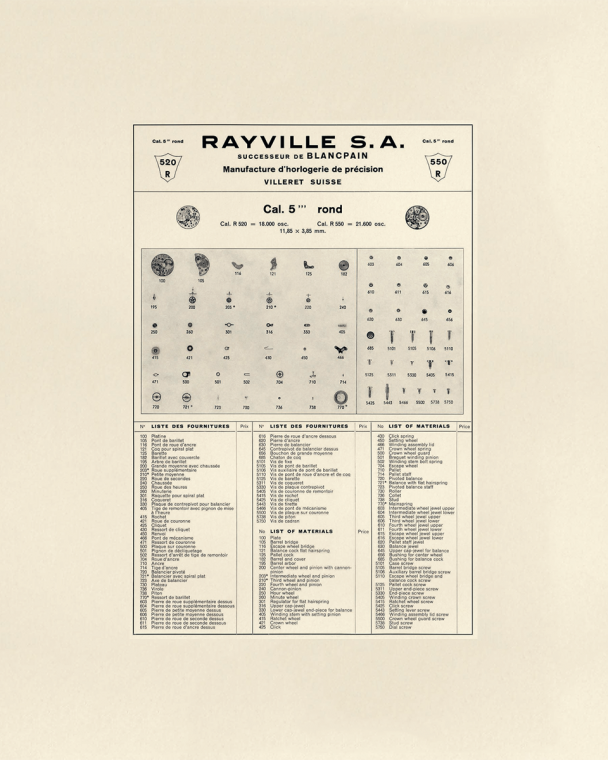
The Ladybird specification sheet showing components in actual size; take note of the balance wheel at far left, bottom row.
Blancpain was FAVORED BY MARILYN MONROE.
The naming of Fiechter’s creation as the Ladybird lay at the intersection between French and American English. What he had in mind was the word coccinelle which is the French name for a ladybug. In French, that fit perfectly and captured the essence of the petite size of the movement and the refinement of the watch. But there was a problem translating into American English. Although coccinelle may be romantic and, indeed, is lyrical as it rolls off the tongue, the American translation, “ladybug”, enjoys neither of these virtues. There simply is no way to dress up the guttural grunt- ing tied to the word “bug” and the images it conjures of unsavory insects. To dodge this harsh conundrum, Fiechter had the inspiration to bulldoze translation issues to one side and adopt what for Americans would be the entirely fanciful name “Ladybird” which would remain the same in both languages.
Creativity did not stop with the groundbreaking movement. Blancpain invented the “Bullet” version of the Ladybird with an easy strap changing systemwhich was a world first for a haut de gamme timepiece. The back of the watch had a slot into which the strap was threaded. In only a matter of seconds, with no manual dexterity required, the strap could be changed to a different color. Indeed, the Bullet Ladybird was sold with a selection of straps in three different colors.
Blancpain’s Ladybird enjoyed enormous commercial success both with watches sold under the name Blancpain and with watches sold under the name of different watch brands and jewelry houses. Following the model pioneered by Betty Fiechter, many Ladybirds were exported as finished movements housed in an inner case. Thereupon, these watches were completed by outfitting them with an outer gold case and, in most cases, adding decorative jewels. One of the heavily gem set pieces was chosen by Marilyn Monroe.
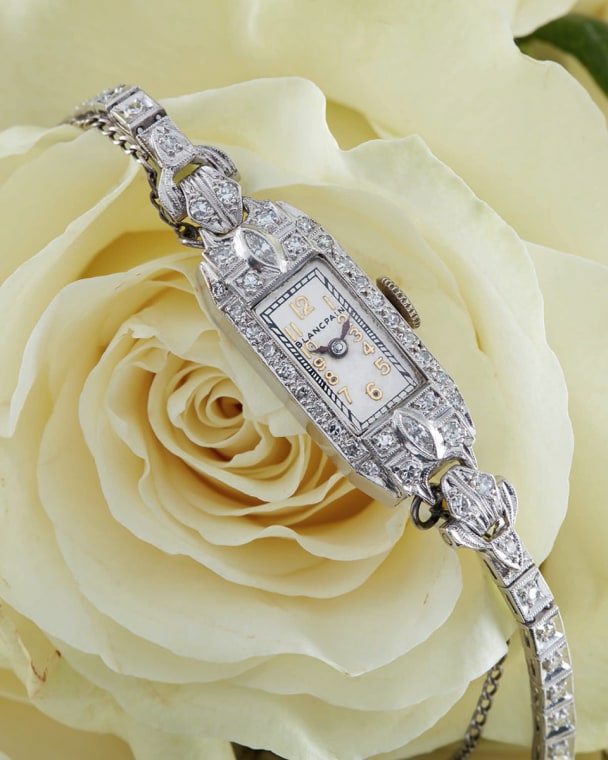
Marilyn Monroe’s Blancpain.
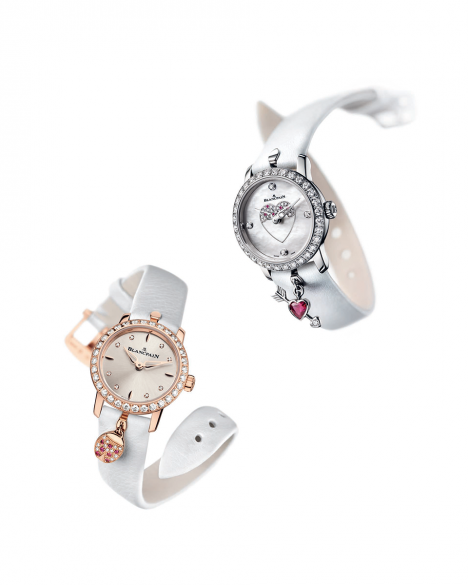
The MODERN LADYBIRD offering a diversity of styles.
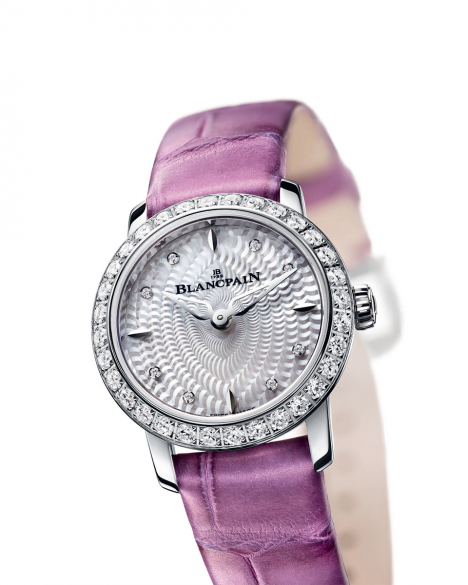
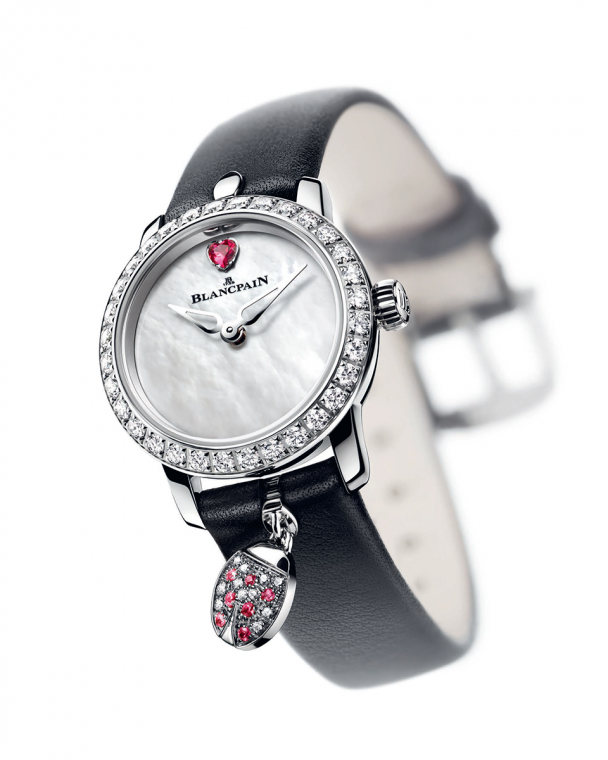
The Ladybird has always been BLANCPAIN’S SIGNATURE small diameter timepiece.
In addition to its commercial success, the Ladybird achieved critical acclaim. Today, the Grand Prix d’Horlogerie de Genève (“Geneva Grand Prix of Horology” or as it is often called “GPHG”) is the premier yearly Swiss watch competition. Its predecessor was the Prix de la Ville de Genève (“The City of Geneva Prize”) which the Ladybird won several times.
Since it debuted in 1956, the Ladybird has been a fixture in Blancpain’s collections. Although the movements have changed over the years and taken on the added luxury of automatic winding, Ladybirds have always been Blancpain’s signature small diameter timepieces. Capturing the essence of what they represent, Blancpain in the 1980s observed that “if the Ladybird were made larger, it would be too small”!
The modern Ladybird offers a diverse collection of models in both white gold and red gold, all 21.5 mm in diameter. Gem settings distinguish the pieces with both diamond set bezels and, on the dial, diamonds and often rubies or sapphires. Many varieties are further decorated with mother-of-pearl or finely sunburst opaline dials. All models boast platinum winding rotors and clear case backs. For the 60th anniversary year, to bring an added feminine touch to the Ladybird, Blancpain has fitted the case with gem set pendants in a variety of different styles: open styled heart shapes with diamonds and rubies, solid hearts with diamonds and, naturally, ladybugs with snow settings (serti neige) of diamonds and rubies. As the ownerwishes, these pendants can easily be attached, removed or changed, or, as a further option, more than one can be attached to the watch. As well, there is a special 60th anniversary edition which is distinguished by its finely carved mother-of-pearl dial accented by diamonds and a platinum winding rotor decorated with a serti piquet diamond and delicate soleil traces radiating outward from the gemstone. Straps are offered in alligator, calfskin and satin; by special order a double wrap calfskin bracelet is available.
Other issues
Don't miss the latest issue
Sign Up for New Releases

